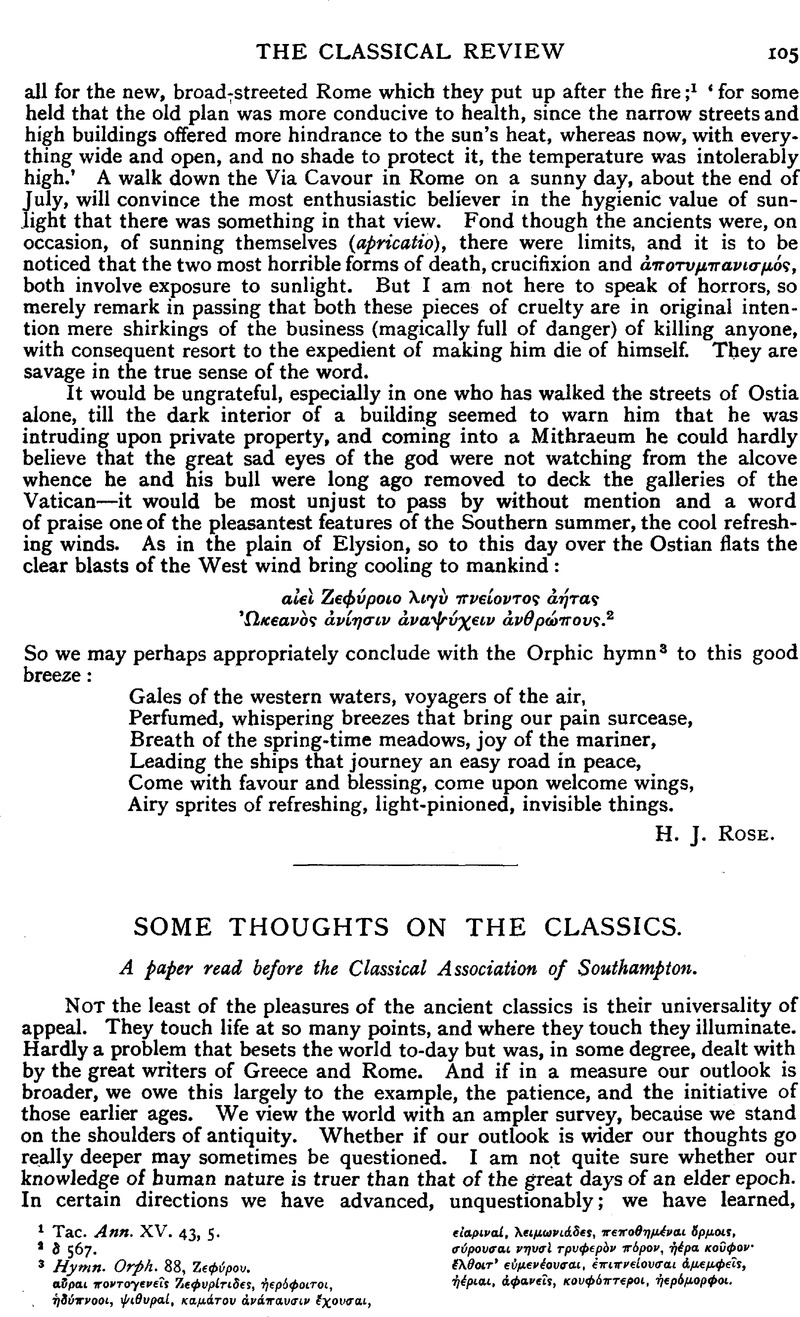No CrossRef data available.
Article contents
Some Thoughts on the Classics
Published online by Cambridge University Press: 27 October 2009
Abstract

Information
- Type
- Review Article
- Information
- Copyright
- Copyright © The Classical Association 1927
References
page 105 note 1 Tac. Ann. XV. 43, 5.
page 105 note 2 δ 567.
page 105 note 3 Hymn. Orph. 88, 
page 106 note 1 Types of Ethical Theory.
page 109 note 1 See his Side Lights on New Testament Research (Section VI.). Some critics would exempt the New Testament text from the hand ofthe emender; but why, provided the conjecture is good and carefully follow the ductus literarum? Two excellent conjectures occur to mind here: one in John xix. 29, where for ὐσσώπ (=hyssop) (which makes no sense) read, with Camerarius, ὑσσῷ (=a spear); another in Acts xvii. 14, where for π τν θλασσαν read π τν Θεσσλαν. But hasty conjectures are always to be avoided; as Jebb pertinently says: ‘ Rash conjecture constantly arises from defective understanding.’

